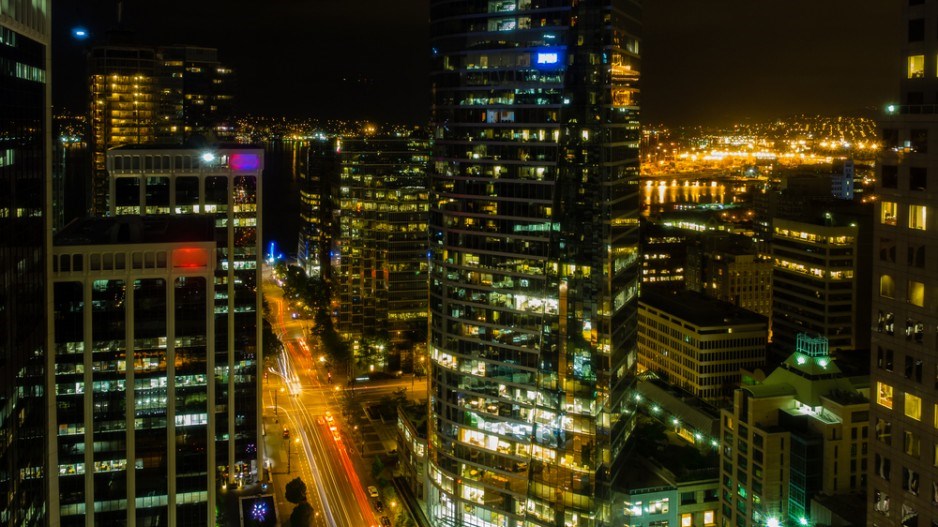Power strip
Debate the relationship between power and money all you want, but the latest Jones Lang LaSalle (JLL) survey of Canada’s office markets indicates that Toronto, Vancouver and Ottawa are home to the country’s most expensive office space.
The average gross rent per square foot of office space is $68.19 on Bay Street between Front and King in Toronto, followed by $57.72 on Burrard Street north of Georgia in Vancouver. Ottawa’s Queen Street bumped 8 Avenue SW in Calgary from the top three this year, thanks to the latter’s flagging energy sector.
Burrard Street’s strength continued despite the addition of 1.2 million square feet of new office space to the market in 2015. While the local vacancy rate nearly doubled to 2.9% from 1.6%, and average gross rent slipped by a couple of dollars, at $57.72 it remained comfortably above the above the five-year average of $55.94.
The solid rents are accompanied by cap rates lower than anywhere else in the country, too: while Toronto is home to Bay Street and Ottawa the seat of political power, Vancouver is a desirable investment location.
“Cap rates as low as 4% have been reported in the downtown district, setting a new low in yield rates and a high in property values in this rare location,” gushes Colliers International in a new report on cap rates.
A blockbuster year for multifamily transactions, meanwhile, pushed cap rates for highrise apartment blocks to as little as 2.5% – lower than anywhere else in the country.
Best second
Global investor sentiment is also favouring Metro Vancouver in 2016. The region not only topped the list of respondents to PwC’s survey for the Urban Land Institute’s annual Emerging Trends in Real Estate report last fall, it’s the top secondary pick of investors looking at Canada, according to Colliers International’s recent Global Investor Outlook report.
Vancouver tied with Phoenix among investors, after New York and Houston. While investors within North America are confident of the prospects for the continent’s real estate, investors from the Middle East and Europe are also expressing significant interest.
Andrew Warren, director, real estate research, for PwC, told the Urban Land Institute’s B.C. chapter in November that business confidence is as robust as it was in 2006 – just before the exuberance of the decade’s real estate boom came to an end.
Colliers, like Warren, underscores the need for caution amid the fervour.
“Investors of all stripes, from the biggest institutions to the regional grocery-anchored retail manager, see avenues for opportunity, but also the need to remain cautious,” Colliers notes. “Seven years into the up cycle, we can sometimes forget that this is a cyclical industry.”
There’s little evidence of that, however, among homebuyers. While many are priced out of the market, year-end numbers from the Real Estate Board of Greater Vancouver (REBGV) indicate that 2015 saw record home sales, not to mention record pricing.
REBGV’s benchmark price rose a whopping 9.6% in the second half of the year, the greatest change since the first half of 2006. The gain for the year was 19.2%.
Tight sandbox
With so much competition for assets, and such a small land base for new development, what’s the Lower Mainland to do?
“How do you put in 60,000 or 80,000 square feet of office space at 13th and Lonsdale without upsetting some people?” asked North Vancouver city Mayor Darrell Mussatto of commercial real estate association NAIOP a few weeks ago, citing challenges to Onni’s development of a new grocery-anchored office development on Lonsdale Avenue. “We’re having huge challenges with how we’re all going to get along together in the sandbox.”
With no new land being created, Mussatto urged the expansion of civic vision and public tolerance – really, the only variables land-locked municipalities can tap to accommodate growth •




